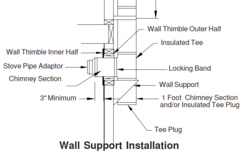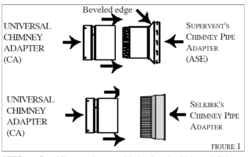Hi there. my wife and I bought our first home this summer, and it came with an ancient schrader woodstove with single wall stove pipe, which was not installed or set up properly. I replaced the schrader with a restored lopi M380, early secondary burn ideas with an airtight firebox. Anyways, when using the schrader, if I didn't babysit it, it got very hot, very fast, it wasn't airtight and had no clearance from the corners...not very safe. I noticed a couple of times that the drywall where the stove pipe went Into the wall was getting very hot one night, almost too hot to comfortably touch for too long. I damped it down and it cooled off eventually. Kinda scared me a bit, and I quit using the schrader. when I set the lopi up, I decided to use double wall stove pipe to see if it would help keep things cooler.
When taking the old pipe off the wall, I noticed the drywall was only 1/4 to 1/2 inch away from the outside of the chimney pipe that penetrates thru the inside wall. My dad says it ought to be at least 2 inches away. I cut away the drywall around the pipe 2 inches and I ran into a metal plate behind the drywall. I wasn't sure if there was a thimble supporting the pipe, but I think this might be it? Can any of you all tell in the pictures if that's part of the thimble? I think the 8" double wall chimney pipe and adapter is metalbestos brand?
Thanks very much,
Dow
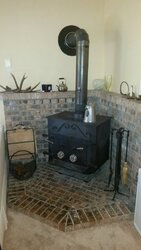
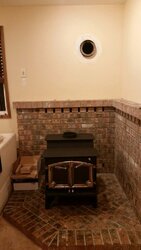
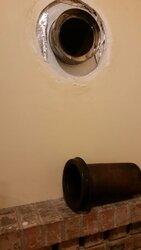
When taking the old pipe off the wall, I noticed the drywall was only 1/4 to 1/2 inch away from the outside of the chimney pipe that penetrates thru the inside wall. My dad says it ought to be at least 2 inches away. I cut away the drywall around the pipe 2 inches and I ran into a metal plate behind the drywall. I wasn't sure if there was a thimble supporting the pipe, but I think this might be it? Can any of you all tell in the pictures if that's part of the thimble? I think the 8" double wall chimney pipe and adapter is metalbestos brand?
Thanks very much,
Dow



Last edited by a moderator:


